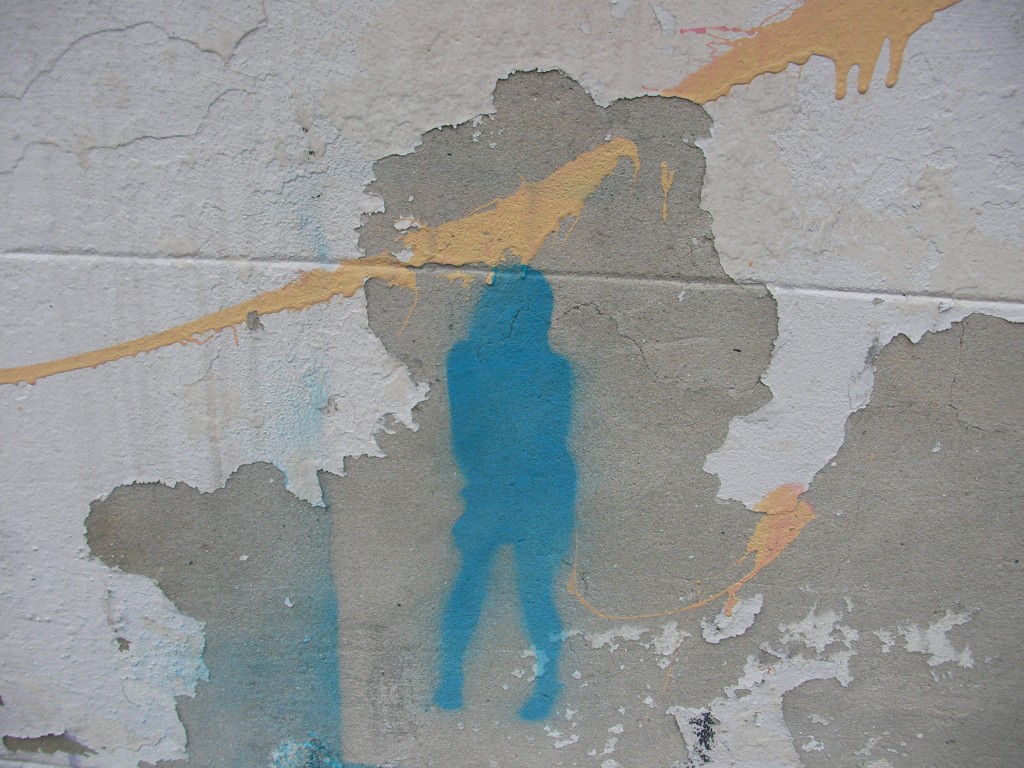I have revised this post by adding many more links to recordings found on YouTube (the Beatles’ “personal pronouns period” songs), definitions from Dictionary.com and Wikipedia, and links to Amazon.com if one is interested in purchasing The Beatles’ With The Beatles or Weather Report’s I Sing The Body Electric.
This is the rainy Tuesday morning (December 18, 2012) in Gloucester after the New York Jets self-destructed on national television last night. It is also the 40th blog post at www.emichaelmusic.com. One way to celebrate would be to show a video someone made of me composing at the piano. There will be a video below that will emphasize what I want to discuss today. The best chord ever. At least for today, this is the best chord ever.
* * * * * * * * * * * * * * * *
I love chords. I’ve often composed at a piano by playing one chord, isolating it and thinking about where the sounding pitches want to go next, and then maybe writing the new chord that resolves the pitches from the first chord. The first chord was a commanding boss that demanded to have its way. The second chord, in the scenario I am describing, is a slave – it has no choice but to be and do as the first chord demands.
Or repeating or rearticulating my first chord. Maybe the first chord wants to just linger and eventually fade away. If it was really good, maybe it’s time to repeat it. Or maybe it’s time for a series of chords led by this great chord. The intervals in the chord can be unfolded and turned into melody, and maybe this melody will be harmonized by this chord or subsequent transpositions of this chord. This type of composing can lead to countless areas and new musical expression.
In this post, I’m considering a chord one only hears in one context – in one particular song. Without this chord, the song wouldn’t be as good. But this great chord doesn’t fit in its context.
Listen to the first sounds, i.e., the first chord, in this Beatles song:
The chord has no business being here. Or in any pop song. Could this chord be heard in jazz? I don’t think Ornette Coleman would use this chord. I don’t think Thelonious Monk would have either. Cecil Taylor? Maybe Cecil Taylor would use it. Early Weather Report? Yes, maybe. I could imagine this chord/hear this chord in “Vertical Invader“ from side 2, song 1 of Weather Report’s second album, I Sing The Body Electric. The Rolling Stones, Aerosmith, Eminem and Kanye – nope, they wouldn’t use it. The Beatles used it. Once and only once. The chord is used only at the opening. Never again in any Beatles song. Not in outtakes, bootlegs. Nowhere. Damn. Or as Miles Davis would have said, “DAY-UHM.”
So, here is one of the best chords ever. You hear it arpeggiated at the opening.
It is solo guitar –
no singing
no bass
no drums
no keyboards
Only guitar playing this mystical chord:
The chord consists of these five (5) notes:
The Beatles used this most advanced, dissonant and mystical chord only once and only here on their second album. This was during their personal pronoun period. The early Beatles’ song titles were filled with personal pronouns –
P. S. I Love You, etc.
Their lyrics too were very simple. So, why with all of this simplicity and direct boy-girl expression, did they use this complex chord? The chord does not reappear in All I’ve Got To Do, the With The Beatles album, or any subsequent Beatles song or album.
Does this chord appear anywhere else, i.e., in any songs? I’ve never done a search for it. I think I would be searching for a very long time for this chord.
My point of this post – this is a GREAT CHORD. It’s so striking and unusual. It adds a lot to this song even if it is only used once – actually, once in the Beatles’ lifetimes. As a little kid when I first heard All I’ve Got To Do, I thought the chord was scary. As I got older it became mysterious, or in Boston speak, wicked cool. What do you think of this chord?
* * * * * * * * * * * * * * * *
Don’t read this section – (jump down to the final sentence). It is the most music theory I’ve delved into yet in these forty (40) blog posts.
I made sure to avoid naming this chord. This chord can have a few names – it can be…
E 11 #5 (pronounced “E eleven sharp five”) – this is probably the most acceptable name of names. (To be literally correct, the pitch “C” should be re-spelled as a B#, pronounced B sharp, but most non-Western Classical musicians would rather see, hear, think and speak “C” than “B#.”)
F# min 9 b5 in 3rd inversion (pronounced F sharp minor nine flat five in third inversion) – a very foolish name but accurate description.
An F# min 9 b5 in 3rd inversion would also be an F# half diminished 7 with an added Major 9, again in 3rd inversion. Again, a foolish name but accurate description.
This chord is also the verticalization of the upper tetrachord of the A melodic minor ascending scale functioning as a dominant in A minor with the added 3rd from its resolution to an A minor chord. Blah blah.
In pitch-class set theory, the chord is the pitch class set, 0 2 4 5 8. Its most compact arrangement is: E F# G# A C, which really spells out the upper tetrachord of the A melodic minor scale with an an added natural 3 of the A minor scale. (I hope you didn’t read this section.)
* * * * * * * * * * * * * * * *
I want to explore other “best chords ever” in the future. Do you have any best chords ever/favorite chords?




As a copyist, I would have definitely written it as an E 11 #5 and some musicians would groan! The chord is reminiscent of the stabs heard when Batman is in a fight “bam,” “pow,” etc.
That’s funny – I’ll need to watch some Batman soon! The E 11 #5 orchestrated become a pow chord (not power chord) in Batman!
Oops. I read the section you said not to, but I wanted to know how you looked at it from a Music Theory perspective.
Hi Frank – all of them are correct as a name depends on context – what came before and after that particular chord. The half diminished 7th in 3rd inversion with an added Maj 9th is as absurd as can be.
I really hear it as two entities – the E 11 #5, and as that pitch class set which has its tetrachordal top-of-the-A-melodic minor thing going on. : ) As a composer, I could write a lot of music just using it as pitch-class set 0 2 4 5 8.
Hey, thanks so much for verifying what I just finished figuring out! A great great chord (& intro) to a favorite early Beatles tune. Great to know that the ol’ ears are still as sharp as ever!,,,
PS: Listening of late to an early Beatles compilation I’d made, and inevitably as always, I come back again and again to this song. Finally got the urge to sit down and play it – on piano, to the Cd (FUN FUN FUN!), but had to grab the ol’ gee-tar to try and sound out the chord, which I did, and ‘mapped it’, then back downstairs to transpose to piano! HAD TO search the net to confirm, and voila! — Thanks again, friend! — Danny “Bonesmahones” Maloney of Elmira, Nooh Yawk
I don’t see how you can call it an E 11 when there’s a 3rd (G#) there. F# is the root I think
though it has an undeniable augmented sound
Hi Chris – This is an odd chord to label in our tertian-harmony based Western Classical music theory. This chord does not have a normal preparation or resolution, so that too would add to its nebulousness.
It could be called a chord with an “F#” root but that would then indicate that it is in 3rd inversion, a fact which seems odder than naming it as an “E” entity in root position, a view I favor and one that would be more common in our Western Classical music theory.
I never studied music but I hung around with guys that did. Why can’t this chord be called E+sus4add9 ?
Steve:
E+ sus4 add 9 could work as a name but it is more complicated and a bit lengthier a description. E11 #5 is shorter and clearer to some.
Chords like this are rare and open to different interpretations/names.
Woudn’t it be simplest to think of it as a kind of G#7 since it leads to C#m? It has enough of the notes of the chord to qualify, IMHO. Probably just an “awkward” voicing of some “beginner” musicians (of genius).
Setting aside theory first and listening to where the chord wants to go, I lean towards Mike’s interpretation, hearing it as a G#7 (alt) chord, yearning to resolve to C#min.
The defining 1 (G# wanting to resolve to C#), 3 (C to C#), and b7 (F# to E) – the latter two being the tritone in need of resolution – are all there plus a #5 (A to G#) and b9 (common E). In fact if you play G#7#5b9 with G# in bass it has the same harmonic ‘character’ as the opening chord, as you’d expect since they have the same notes but in a different sequence.
So my vote would be for G#7#5b9/E.
Incidentally, having the E on the bottom makes it much easier to nail singing the first note of the melody, E, after hearing that wonderful hard-to-pin-down chord. Who knows, perhaps that’s how the chord configuration came to be.
Apologies: I messed up and transposed the two altered notes (#5 and b9). Here it is again…
Setting aside theory first and listening to where the chord wants to go, I lean towards Mike’s interpretation, hearing it as a G#7 (alt) chord, yearning to resolve to C#min.
The defining 1 (G# wanting to resolve to C#), 3 (C to C#), and b7 (F# to E) – the latter two being the tritone in need of resolution – are all there plus a #5 (common E) and b9 (A to G#). In fact if you play G#7#5b9 with G# in bass it has the same harmonic ‘character’ as the opening chord, as you’d expect since they have the same notes but in a different sequence.
So my vote would be for G#7#5b9/E.
Incidentally, having the E on the bottom makes it much easier to nail singing the first note of the melody, E, after hearing that wonderful hard-to-pin-down chord. Who knows, perhaps that’s how the chord configuration came to be.
One more thought: to my ear an E#5 chord wants to go to some form of A chord to resolve – like The Beatles’ Oh Darling – but that’s not the case here. Is it possible having an E on the bottom of the chord has influenced the discussion in favour of it being an E chord over the years?
Hi Mike:
This chord is open for multiple interpretations. Not everyone will agree with any singular specific designation. I wouldn’t consider it a form of G#7 – G# B# D# F# – because of the strange explanation that would be needed to account for the “A” and “E.” But dominant to tonic resolution makes sense.
Thank you for your thoughts!
This mystery chord reminds my of the Smokey Robinson song “You Can Depend On Me”. I know Lennon was a big Smokey fan, especially back in the early years. Not sure what chord the Miracles used though.
E 11 +5 is probably the most accurate chord to assign to this amazing intro. I’ve always known the correct notes however I’ve forever described it to other band mates as a, get ready for this, Am(maj7)6 / E
Cheers
Thanks for your post. The Beatles: The Complete Scores labels it E augmented add 9 add 11. The tab shows the root note is played on the 7th fret. As a guitarist and Beatles fan, I find this approach to the chord name useful, as augmented chords are common in the blues and in some Beatle tunes. For example, that same E – G# – C with an extra E on top —and without the high F# and A — is the opening chord to the Beatles “Oh Darling.” The “All I’ve Gotta Do” opening chord could very well have been a mistake, a fumbled and clumsy simple E7 that they decided to keep because it was so striking. I’m glad they did.
And how about the second-last chord on Harrison’s classical guitar solo on “Till There Was You”? A C7 b9 add 13 — but with an F# as the bass note! Where’d George come up with that one?! Beautiful!